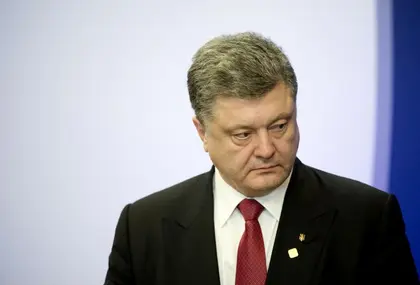“Even before Minsk… I warned that we will have to, if there is no peace, take a very difficult but necessary decision to introduce martial law,” Poroshenko said today. “I stress once again that in this case the martial law will be introduced not just in Donetsk and Luhansk, but in the whole country.”
Introduction of martial law means that Ukraine’s army gets to control the streets and impose curfews, ban parties and other organizations, as well as mass gatherings, conduct searches and introduce censorship. It’s also allowed to claim property of businesses and private individual if needed.
JOIN US ON TELEGRAM
Follow our coverage of the war on the @Kyivpost_official.
Ukraine’s army said there has been no sign that the cease-fire is going to start in the east. Moreover, fights intensified in some areas, most notably close to Debaltseve, a strategic railroad junction between Luhansk and Donetsk Oblasts. Yuriy Butusov, a Ukrainian journalist and editor of censor.net news portal, who covers the war in the east, wrote on his Facebook page that Debaltseve was surrounded by separatists, trapping thousands of servicemen.
Andriy Lysenko, a government military spokesman, did not confirm the information, but said there was “heavy fighting” close to Debaltseve, and the pro-Russian separatists gained territory in the area. “The terrorists continue to move to Ukraine’s territory additional manpower and stock military equipment,” Lysenko said.
He also said seven Ukrainian servicemen were killed in attacks and 23 were wounded in 24 hours. He also claimed that 100 “terrorists” had been killed, but offered no verifying information in his daily briefing on Feb. 14.
Poroshenko also said more military gear was being moved to the area.
“Our partners and friends, relying on their own intelligence, confirm not only the presence of Russian tanks, rocket launchers, armored personnel carriers in the vicinity of Debaltseve and in other areas, but they also confirm the concentration of new batches of Russian military equipment at the border, which is prepared for the invasion of our homeland through the parts of the border which we do not control yet,” he said during a ceremony of transfer of armored vehicles and other equipment to border guard in Kyiv today.
The U.S. Embassy in Russia tweeted a satellite image of heavy artillery stationed in the area, pointing a finger to the Russian army for setting it up. https://twitter.com/USEmbRu/status/566550115771748…
“Pro-Russian separatists have a bigger army now (tanks, armored personnel vehicles, heavy artillery, missiles) than some countries in NATO and Europe,” the embassy tweeted.
The Organization for Security and Cooperation in Europe’s monitoring mission said in its latest report that fighting also continued on the day cease-fire agreements were signed. There were a total of 88 attacks recorded by the mission in the 24 hours that ended at 6 p.m. on Feb. 12.
Although the number was down from the previous recorded cycle, it was still about four times the typical number of attacks at the beginning of the year. Also, the report said that “almost all violations have been by multiple launch rocket systems, heavy artillery and mortars, with the areas most affected concentrated in Debaltseve (55 kilometers north of Donetsk, government-controlled) and Novoazovsk (120km south-east of Donetsk, separatist- controlled).”
In the meantime, leader of the self-proclaimed Donetsk People’s Republic Oleksandr Zakharchenko said that his troops would keep on fighting around Debaltseve because it was not a part of the Minsk peace deal. Debaltseve is a strategic railway junction on the border of Lunahsk and Donetsk oblasts.
Moreover, the separatist leader dismissed the Minsk peace deal as too vague and not good enough for his so-called republic.
“All we see so far is vague formulations and various interpretations. If there is no constructive document, it won’t lead to anything good,” Zakharchenko was quoted by Interfax-Uktaine news agency as saying.
You can also highlight the text and press Ctrl + Enter




